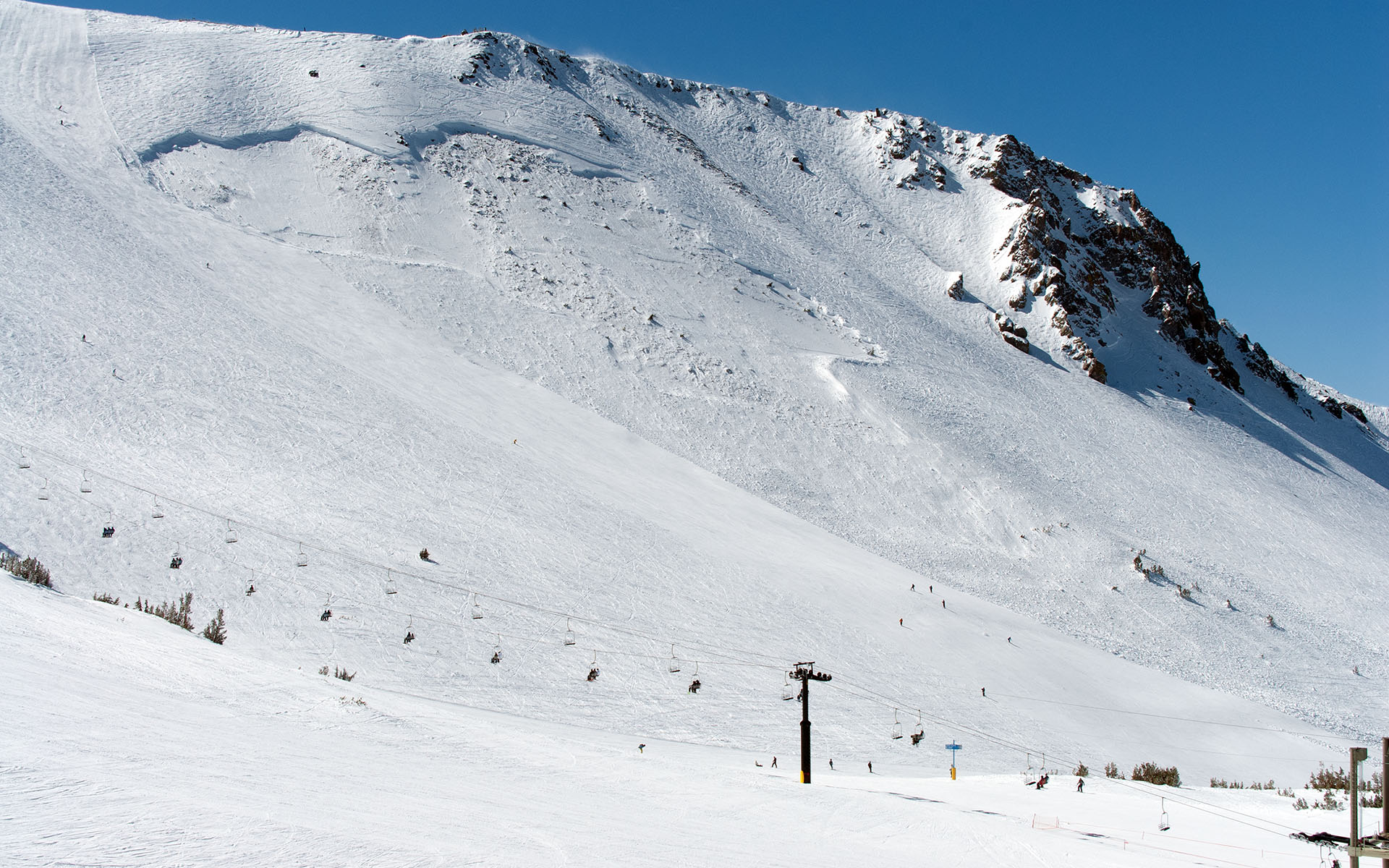Bomb The Hell Out of It

If predicting the behavior of avalanches is so challenging, how do ski patrol do it? How do they make a mountain safe? Perhaps we should take a look at that—and see if we can borrow any of their tactics.
Inbounds control work at a major ski resort begins not just before the first snow of the season, but literally before the resort's creation, when active slide paths are mapped, named, and monitored as part of the development plan.
There is thus a historical record of snowpack and slide potential going all the way back to the resort's inception.
When a new season is underway, the first snowfall is recorded, beginning what will become a daily log of the subsequent snowpack. If that first layer is shallow—and it often is—bitter early-season temperatures will create large temperature gradients that lead to constructive metamorphosis and snow crystal growth.
This weak, faceted layer (depth hoar) will be watched closely as the season develops, to see how it interacts with subsequent storms, wind events, and temperature changes.
When a storm arrives, ski patrol pay particular attention to wind direction and intensity, which will help them identify which slide paths are likely to be loaded.
In some cases patrol will bomb slopes during active storms to prevent extreme loading from developing, but often it's best just to wait, allow the storm to clear, and then wait some more.
Time gives Mother Nature a chance to show her hand.
If a suspect slope doesn't slide naturally during this phase of control work, patrol will discuss the slide path's historical potential, plus current and anticipated future conditions, to decide whether or not to attempt to open the slope for skiing.
If it's a go, ski patrol will now use explosives not only to trigger instabilities, but also to destroy hidden connections within the snowpack. Explosives reduce the complexity of the snowpack, dismantling the mouse trap within.
Using their extensive record of slide paths and trigger zones, ski patrol bomb exactly those points that have proven in the past to be most reactive.
And then they bomb them some more.
Once this phase has been completed, ski patrol will likely return to a period of watching and waiting—much to the frustration of eager skiers. But this additional time allows the snowpack to further settle, increasing stability via the mechanism of mechanical compaction.
Finally, usually just before opening it, patrol will ski-cut the slope.
This is done in a highly structured and methodical way, with everyone wearing beacons, and with a team of potential rescuers actively watching the ski-cutter, who will move intentionally from safe point to safe point, making predetermined traverses across the slide path's known trigger zones.
Like the use of explosives, these traverses serve to further reduce the snowpack's reactivity by severing hidden interconnections within the snow. The ski cuts also give the patrol one last chance to look for any anomalies or errors in their understanding of the snowpack.
If they see anything they don't like, the slope will remain closed. Otherwise, the rope drops, and the powder circus begins.
Understanding control work as a process that incorporates large amounts of time and data immediately reveals why a pit-based approach to backcountry safety is so utterly inadequate.
But are there themes in the ski patrolers' routine that we might productively adopt in the backcountry?
We might start by cultivating patience. Patience in this case involves not only waiting on any given day, but in some cases waiting months or even years for a slope to come into favorable conditions.
It also takes patience—and discipline—to gather and compile a snow history over the course of a season. Ski patrollers are relentless data collectors. Perhaps we should be as well.
We might also note there appears to be a great deal of humility built into the control process.
Despite the ski patrolers' considerable snow science expertise, despite their incredible knowledge of a slope's past and present history, control work relies heavily on bombing and ski-cutting trigger zones to activate slides and reduce complexity.
Patience. Gathering information. Reducing complexity. Humility.
It's interesting to note that after all this work, ski patrol will typically not get to enjoy fresh tracks on the slope they've just cleared—they just go back to work. In this way, ski patrollers are reducing the complexity not just of the snowpack, but of the larger system of which they, too, are a crucial part.
→ Next: The Elephant in the Brain
— December 29, 2023
Andy Lewicky is the author and creator of SierraDescents